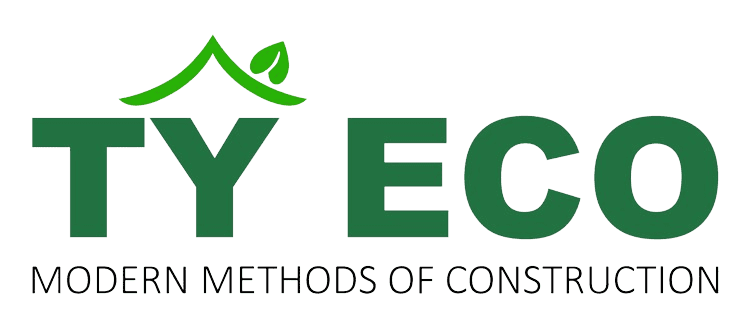The Risks of PIR Insulation: Environmental, Health, and Structural Concerns
Polyisocyanurate (PIR) insulation is commonly used in construction, especially in Structural Insulated Panels (SIPs) and timber-frame homes, due to its high thermal resistance and lightweight nature. However, PIR insulation poses several challenges regarding installation, environmental impact, health risks, fire hazards, and long-term structural reliability. Improper installation can further exacerbate these concerns, leading to compromised insulation performance and safety risks.
PIR is derived from petrochemicals, resulting in a high embodied carbon footprint. The production of 1m³ of PIR insulation emits approximately 35-50 kg CO₂e/m³ (Jones & Hammond, 2007). This makes PIR less sustainable compared to alternatives like cellulose, recycled glass wool or wood fibre; which have a lower carbon footprint. As efforts to reduce carbon emissions intensify, PIR becomes less favourable for projects prioritizing environmental sustainability (Duffy et al., 2020).
One of the significant drawbacks of PIR is its emission of volatile organic compounds (VOCs), including formaldehyde and other chemicals that can negatively affect indoor air quality. Off-gassing is most pronounced in the initial weeks after installation but can persist long-term (Persily & Gorfain, 2008). These VOCs can cause respiratory issues, eye irritation, and headaches. In well-sealed, energyefficient buildings, the limited fresh air exchange exacerbates the potential for indoor air quality problems (Hodgson et al., 2002).
PIR insulation presents notable fire hazards, even when treated with fire retardants. During combustion, PIR emits toxic gases such as hydrogen cyanide and carbon monoxide, which can be lethal even at low concentrations (Jones et al., 2015). These risks are particularly concerning in residential or public buildings, where safety standards are paramount. Research has shown that while PIR may meet basic fire performance standards, the toxic fumes it emits can pose severe risks in the event of a fire (Vassart et al., 2018).
PIR insulation is also prone to structural issues when used in SIPs, with delamination being a significant concern. Delamination occurs when the PIR core separates from its outer sheathing, weakening the SIP’s structural integrity. This can result from:
Thermal Expansion and Contraction: Temperature fluctuations cause PIR to expand and contract, leading to separation between the foam core and the SIP facings (NAHB, 2020).
Moisture Ingress: Despite being water-resistant, prolonged moisture exposure weakens the adhesive bonds, further increasing the risk of delamination and mold growth (Halim & Mahlia, 2019). Water ingress can also degrade the insulation's thermal performance, reducing its effectiveness.
Aging of Adhesives: Over time, the adhesives that bond the PIR core to the SIP facings degrade due to environmental factors such as humidity, temperature changes, and UV exposure (Halim & Mahlia, 2019). This results in reduced structural and thermal performance, weakening the building's overall stability
When delamination occurs, it can lead to several negative outcomes:
Reduced Structural Integrity: SIPs rely on the adhesion between the PIR core and outer sheathing for their structural strength. Delamination compromises this bond, increasing the risk of buckling, warping, or collapse in extreme cases (NAHB, 2020).
Decreased Thermal Efficiency: Air gaps resulting from delamination disrupt the airtightness of the SIPs, allowing heat to escape. This increases energy consumption as heating and cooling systems work harder to maintain a stable indoor environment (Halim & Mahlia, 2019).
Poorly installed PIR insulation can also be problematic in timber-frame walls, where installation gaps and voids allow air to circulate freely. These gaps create convection currents within the wall cavity, leading to significant heat loss. Thermal bypass occurs when air moves through these voids, undermining the insulation’s effectiveness and resulting in heat escaping up to five times faster than through properly insulated sections (Baker, 2011). This not only increases energy consumption but also raises the risk of moisture accumulation, which can damage the timber frame and promote mold growth (Bordass, 2014).
Maintaining an airtight and continuous insulation layer is essential in timber-frame construction to prevent heat loss, condensation, and long-term structural damage. When PIR insulation is poorly installed, its high thermal resistance is nullified, and the benefits of using such a material are lost.
While PIR insulation offers strong thermal performance, it is associated with several significant concerns. Its high carbon footprint, health risks from VOC emissions, fire hazards, and structural vulnerabilities such as delamination make it a less-than-ideal choice for many construction projects. Poor installation, particularly in timber-frame homes, can lead to additional problems like air leaks, heat loss, and moisture damage. For sustainable, energy-efficient, and safe construction, alternative insulation materials—especially those with lower environmental impacts—should be considered.
Sources:
Jones, P., & Hammond, G. (2007). Embodied energy and carbon in construction materials. Building Research & Information.
Persily, A., & Gorfain, J. (2008). Indoor Air Quality in Buildings Using PIR Insulation.
Halim, N., & Mahlia, T. M. I. (2019). Energy Efficiency in Buildings: The Delamination of Insulated Panels. Energy Efficiency Journal.
National Association of Home Builders. (2020). Structural Insulated Panel Failures in Residential Construction: Causes and Solutions.
Duffy, P., Fitzgerald, B., & Owens, J. (2020). Environmental Impacts of Insulation Materials: Comparative Life Cycle Assessment. Sustainability Journal.
Hodgson, A. T., Beal, D., & McIlvaine, J. E. (2002). Sources of Formaldehyde, Other Aldehydes, and Terpenes in a Pilot Study of New Homes. Indoor Air.
Vassart, O., Smith, S., & Monaghan, R. (2018). PIR and PUR in Fire: Safety and Toxicity Considerations. Fire Safety Journal.
Baker, P. (2011). Thermal Bypass Risks in Timber Frame Buildings. BRE.
Bordass, B. (2014). Airtightness and Thermal Performance in Buildings. Building Performance Journal.


